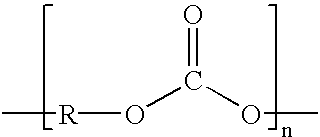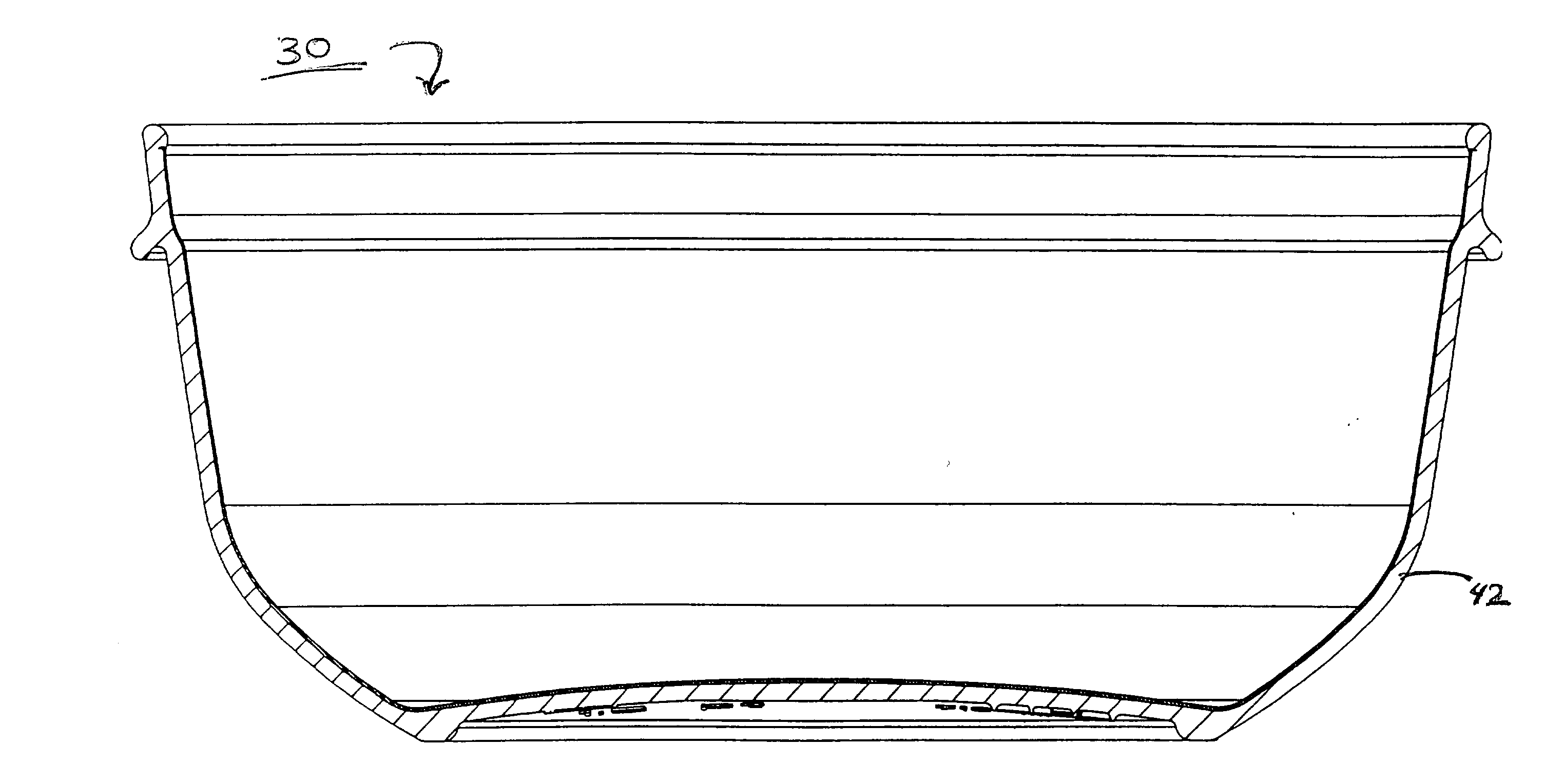Multi-layer plastic articles and methods of making the same
a multi-layer, plastic article technology, applied in the direction of food containers, synthetic resin layered products, packaging, etc., can solve the problems of frequent staining of food containers made of polyethylene, polypropylene, etc., and achieve the effect of improving the stability and durability of food containers
- Summary
- Abstract
- Description
- Claims
- Application Information
AI Technical Summary
Problems solved by technology
Method used
Image
Examples
Embodiment Construction
[0032] Three dimensional plastic articles that are both economical to manufacture and capable of resisting damage and stress caused by a variety of factors are disclosed. Accordingly, the disclosed products may be marketed to consumers who are accustomed to low priced plastic products manufactured solely from commodity resins, while simultaneously providing the damage resistance / protective benefits of engineering resins.
[0033] Articles comprising a multi-layer film including a thin layer of engineering resin affixed to a layer of commodity resin are disclosed. Preferably, the articles are reusable.
[0034] The engineering resin layer may be directly fused to the commodity resin layer. In another refinement of the disclosure, the three-dimensional multi-layer article comprises at least one tie layer disposed between the engineering resin layer and the commodity resin layer. In a further refinement, at least one adhesive layer is disposed between the engineering resin layer and the comm...
PUM
| Property | Measurement | Unit |
|---|---|---|
| Angle | aaaaa | aaaaa |
| Angle | aaaaa | aaaaa |
| Electrical resistance | aaaaa | aaaaa |
Abstract
Description
Claims
Application Information
 Login to View More
Login to View More - R&D
- Intellectual Property
- Life Sciences
- Materials
- Tech Scout
- Unparalleled Data Quality
- Higher Quality Content
- 60% Fewer Hallucinations
Browse by: Latest US Patents, China's latest patents, Technical Efficacy Thesaurus, Application Domain, Technology Topic, Popular Technical Reports.
© 2025 PatSnap. All rights reserved.Legal|Privacy policy|Modern Slavery Act Transparency Statement|Sitemap|About US| Contact US: help@patsnap.com



